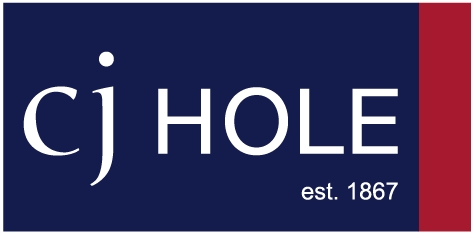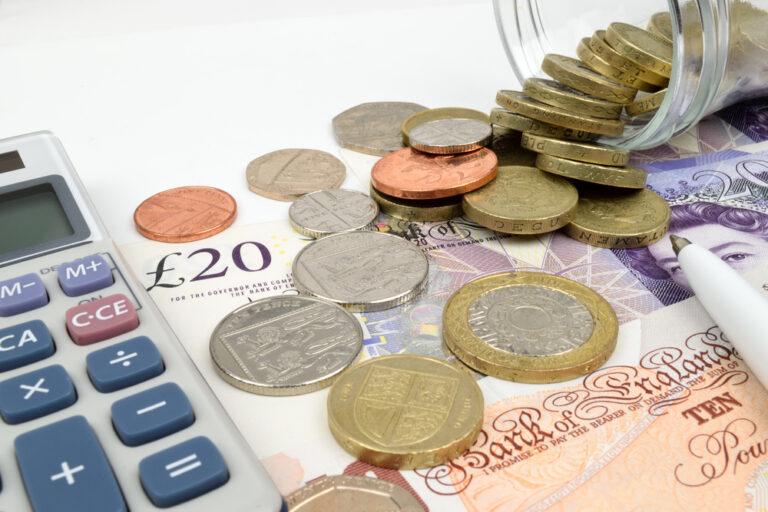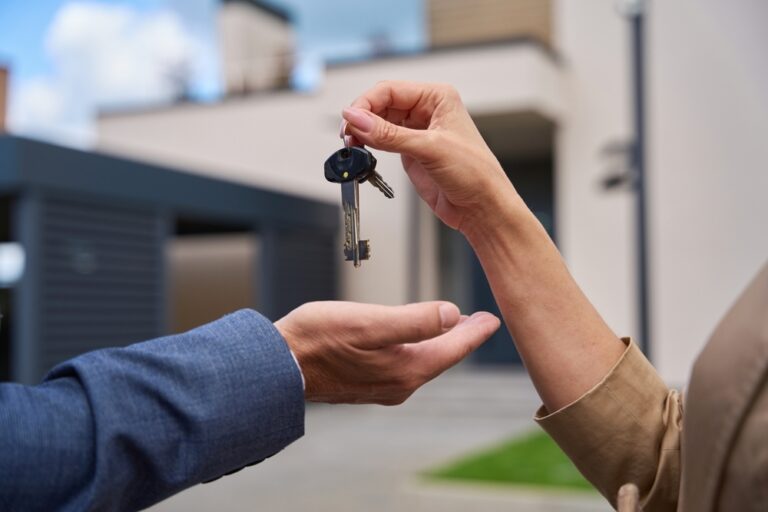Saving a deposit to buy a house is often the biggest challenge – especially for first-time buyers.
But there are options available.
In this guide, we explain everything you need to know about deposits and mortgages while also exploring the options available if you have a small deposit.
What is a mortgage deposit?
Your mortgage deposit is the up-front cash you put forward when buying a property.
You’ll then take out a mortgage loan to cover the remaining amount.
For example, if you’re buying a house for £200,000 and have a £30,000 deposit, you’ll need a mortgage of £170,000 to complete your purchase.
How does a mortgage work?
Once you’ve saved your deposit, you’ll need a mortgage to cover the remaining portion of your property’s purchase price.
Mortgages are loans that are:
- Generally repaid over a long period of time
- Secured against the value of the property you’re buying
Because a mortgage is secured against your property, if you’re unable to pay it back, you could lose your home.
1. Application and assessment
When you apply for a mortgage, your lender will assess your suitability and whether the loan you want is affordable.
The involves them:
- Looking at your credit history
- Assessing your income and outgoings
- Looking at any debts you have
- Stress testing your mortgage against possible interest rate rises
Your lender will also use an income multiple to work out how much they’ll lend you subject to a successful application.
The most common multiple is 4.5 times your salary, or joint salary if you’re buying with someone else.
However, income multiples can vary, with some as low as 3x and some as high as 6x depending on an applicant’s overall suitability.
2. Loan-to-value (LTV)
Your lender will also consider the size of the mortgage you’re applying for against the value of the home you’re buying.
This is known as loan-to-value (LTV).
The higher your LTV, the more risk there is for your lender.
That’s because if property prices were to fall, your home could end up being worth less than the mortgage secured on it.
If you have a high LTV, it’s likely you’ll pay a higher interest rate on your mortgage, while many mortgage products also come with maximum LTVs.
3. Approval
Once your lender is satisfied that you’re suitable for the mortgage you’ve applied for, and they’ve valued the property you’re buying, you’ll receive an official mortgage offer.
Types of mortgages available
When you take out a mortgage, you’ll be able to choose from:
1. Repayment or interest-only terms
A repayment mortgage means you’ll pay down both the capital and interest parts of your mortgage, meaning you’ll have nothing left to pay at the end of your term.
An interest-only mortgage means you’ll only pay down the interest, leaving the capital outstanding at the end of the term.
2. Fixed rate mortgages
With a fixed rate mortgage, you’ll pay a certain rate of interest for a fixed period of time.
Fixed rate deals usually last for between two and five years, although longer deals are available.
3. Variable rate mortgages
With a variable rate mortgage, your interest rate can change at any time throughout the length of your deal – meaning your repayments can go up or down.
Variable rate mortgages include:
- Standard Variable Rate (SVR) mortgages
- Tracker mortgages
- Discounted rate mortgages
What deposit is needed for a mortgage?
The deposit required for a mortgage is usually between 5% and 20% of a property’s purchase price.
Zero deposit mortgages were offered by some lenders in the past but are extremely rare now and reserved mainly for guarantor mortgages.
The number of mortgages available for buyers with a 5% deposit is low compared with deals for those with at least a 10% deposit.
However, these deals are often available, albeit with higher introductory interest rates.
To work out the size of the deposit you’ll need you’ll need to:
1. Think about what you want to buy and prices in your area
Consider the type of property you want to buy and how much it’s likely to cost you in the area you want to live.
The higher the purchase price, the more money you’ll need to save as a deposit or the higher your loan-to-value (LTV) may be.
For example, if you’ve saved £25,000 as a deposit, that money would be a 12.5% deposit for a property costing £200,000 but only a 10% deposit for a property costing £250,000.
That difference of 2% could mean paying a higher interest rate.
2. Consider how much you can afford to pay for your mortgage
Think about how much you can afford in monthly repayments for your mortgage.
If your projected repayments are unaffordable, you may have to save a bigger deposit so you’re borrowing less of your purchase price through a mortgage.
Do mortgage companies accept a 5% deposit?
Some lenders have mortgage deals available for buyers with a 5% deposit.
The number of 95% mortgages available is always limited, however, with more deals available for buyers with deposits of 10% or more.
The government launched its mortgage guarantee scheme in 2021, which was used to encourage lenders to offer more mortgages for buyers with a 5% deposit,
Under the scheme, the government guaranteed the portion of a mortgage above 80%.
This provided more security for lenders and boosted the number of 95% loan-to-value mortgages available.
However, the scheme closes at the end of 2022.
Can you get a loan for a house deposit?
While it’s possible to take out an unsecured loan to boost your property deposit, doing so could affect your mortgage application.
Your lender will class your loan as a debt, and this could negatively affect the amount they’re willing to lend you through a mortgage.
Options when saving for a house deposit
While saving a larger deposit will mean getting a mortgage and buying your dream home is easier, there are other options available if you only have a small deposit to put down:
1. A guarantor mortgage
Guarantor mortgages are sometimes known as family assisted mortgages.
Essentially, a guarantor mortgage sees someone else agree to pay your mortgage if you’re unable to do so.
This is usually a family member and parents agreeing to become a guarantor when their children buy a home is more common now than ever.
Some guarantor mortgages mean you can buy with a zero deposit, although these are rather rare.
Zero deposit mortgages see the guarantor either use their own property or their savings as security for the mortgage.
2. A gifted deposit
A more common way for parents to help their children purchase a home is through a gifted deposit.
Your lender will need to know where the gift has come from and will require proof that the money is a gift and not a loan that needs to be paid back.
Parents who gift money for a child’s deposit also need to be aware of rules around inheritance tax, which can be complex.
3. Shared Ownership
The Shared Ownership scheme sees a buyer purchase a percentage share in either a new-build home or an existing Shared Ownership property and pay reduced rent on the remaining share.
Because you’re not buying 100% of the property up front, the deposit you’ll require will be relative to the percentage you’re buying.
You’ll need to meet the Shared Ownership qualification criteria and be able to secure a Shared Ownership mortgage in order to buy.
It’s possible to buy as little 10% of a Shared Ownership home in some cases, although 25% is more common, and in most cases, you’ll only need a deposit equivalent to 5% of the share you’re buying.
4. A Lifetime ISA
If you’re under 40, Lifetime ISAs can be a good way to boost your deposit as the government will top up your savings by 25% as long as you use the cash to buy your first home.
You can save up to £4,000 into a Lifetime ISA each year, with a maximum government top-up of £1,000 available.
Lifetime ISA cash and top-ups can be used to buy your first home as long as:
- The property doesn’t cost more than £450,000
- You’re buying at least 12 months after opening the ISA
- You’re buying with a mortgage and using a solicitor to act for you
If you withdraw your ISA cash for another reason, you may lose the government top-up.
The pros and cons of low deposits vs high deposits
Whether you save a larger deposit or opt to purchase a property with a smaller deposit will depend on your circumstances and there are pros and cons for both:
Pros of saving a larger deposit
- You may be able to access more attractive mortgage interest rates
- You’ll immediately have more equity in your property
- You’ll have less risk of negative equity if house prices fall
Cons of saving a larger deposit
- You may have to wait longer to buy your property
- House prices may rise while you’re saving
- You may miss out on your ideal property
Pros of buying with a smaller deposit
- You may be able to buy your ideal home quicker
- You’ll be able to start building equity sooner
- You can access the Shared Ownership scheme
Cons of buying with a smaller deposit
- You’ll pay a higher introductory interest rate
- You’ll have less initial equity in your home
- You could be at risk of negative equity if prices fall
Further reading…
- The process of buying a house explained
- Dos and don’ts for first-time buyers
- The best and worst times to buy a house
If you have any questions about buying a home, contact your local branch today.





